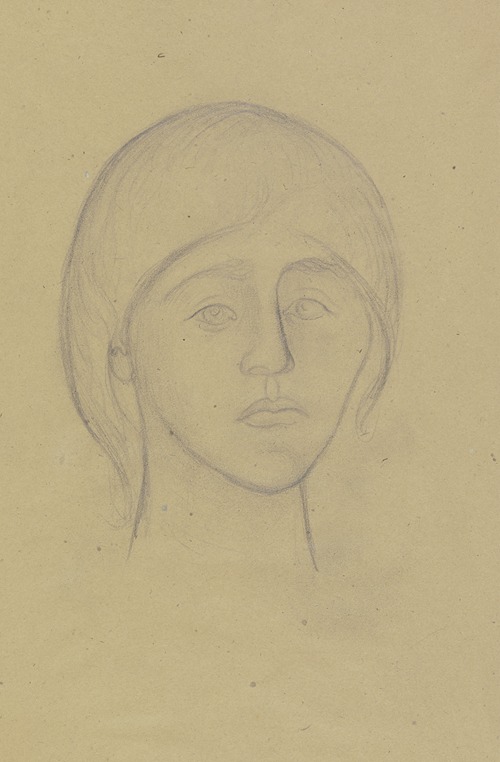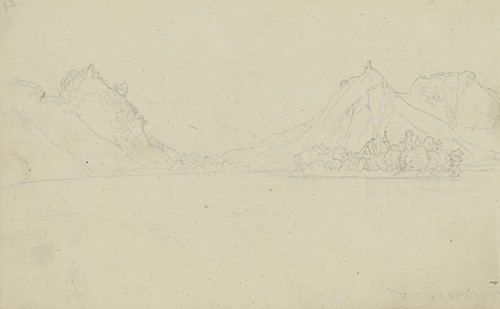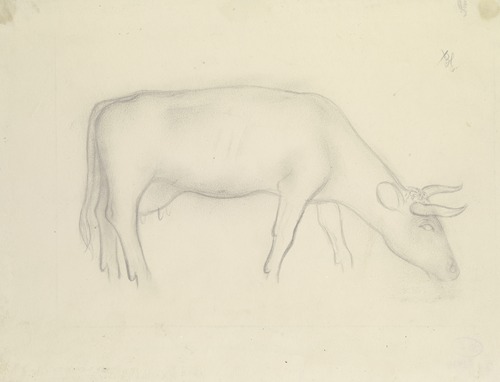





Hermann Blumenthal was a German sculptor.
Hermann Blumenthal's talent for drawing was already apparent at school. He left the Oberrealschule at the age of fourteen in 1920 at his own request and began a stonemason apprenticeship in his home town, which he completed in 1924. He then worked as a journeyman and created works for Will Lammert, among others. From 1923 until his move to Berlin in 1925, he attended evening and Sunday classes at the Essen School of Arts and Crafts, which later became the Folkwang Hochschule. His teacher in modeling and nude drawing was Joseph Enseling. In October 1925, Blumenthal enrolled at the Vereinigte Staatsschulen für Freie und Angewandte Kunst in Berlin. He initially studied under Wilhelm Gerstel, and from 1927 under Edwin Scharff, whose master student he became in 1929. He completed his academic training in 1931. Blumenthal exhibited at the Prussian Academy of Arts for the first time as early as 1928, a year later he became a member of the Deutscher Künstlerbund and was awarded the City of Cologne Prize.
Blumenthal was regarded as a very talented young sculptor who received early support from Edwin Scharff in particular. In 1930, he successfully applied for the "Grand State Prize" of the Prussian Academy of Arts, which entitled him to a nine-month residency at the Villa Massimo in Rome. By the end of the Weimar Republic, political conditions had already become so radicalized that Blumenthal was defamed as a "Jew" in the right-wing press on the occasion of the award ceremony because of his name.
In October 1931, the young sculptor traveled to Rome, where he consolidated his own formal language. While his early works were still oriented towards the Cubist-elegant style of his teacher Edwin Scharff, Blumenthal, under the influence of pre-classical antique art, found his way to a calm human image that formally dealt with simple states of being, such as sitting, standing and kneeling. From 1932 to 1934, Blumenthal lived in Nowawes near Potsdam in difficult economic circumstances. At the end of 1934, he was able to move into a workroom in the Klosterstraße studio community in Berlin-Mitte. Over the years, a group of painters and sculptors came together in Klosterstraße who tried to maintain an individual understanding of art even under National Socialism. Ludwig Kasper and Hermann Blumenthal had a close artistic relationship; Gerhard Marcks and Toni Stadler also belonged to this group of independent sculptors.
Due to their officially unappreciated artistic style, these sculptors found it difficult to earn a living. Hermann Blumenthal in particular was always dependent on grants and other support. In 1935, he was funded to study in Kassel. It was here that he created his first large-scale major work, the figure "Großer Schreitender". During his study visit to Kassel, Blumenthal married Maria Scholz (1909-1947) and the couple had two children.
In 1936, the gallery owner Karl Buchholz in Berlin organized the young sculptor's first solo exhibition, which was well received in the liberal press. Elsewhere, however, Blumenthal was rejected: the Academy of Arts was now critical of his "individualism". As a result, Blumenthal destroyed many of his early works. On the other hand, he was granted another stay in Rome in 1936. From October 1936 to June 1937, he was once again at the Villa Massimo. He was able to extend his stay in Italy until October 1937 thanks to a Villa Romana scholarship in Florence. During this time, he created several major works, such as the "Large Standing Man" and the "Large Kneeling Man", as well as important small sculptures such as the "Sitting Man with Cloth" and the "Sitting Man, Looking Up".
In 1937, his sculpture Schreitender / Junger Sportsmann (bronze, height 151.5 cm, 1931; WV Isermeyer F 23) was confiscated from the Museum Folkwang Essen as part of the Nazi "Degenerate Art" campaign and taken to the art trade for "utilization". It has been in the Lower Saxony State Museum in Hanover since 1960.
After his return from Italy, Blumenthal tried to stabilize his financial situation, mostly by taking part in competitions. Commissioned works were also intended to enable him to be released from military service, as he had been drafted into the Wehrmacht in May 1940. Blumenthal's friends repeatedly tried to obtain his release from the army with countless petitions. In October 1941, he was commissioned to design a relief for the castle in Krakow, for which he was granted work leave, but was not discharged from the army. The state sculptor Arno Breker was finally able to obtain a transfer home. Before the marching orders reached Blumenthal, however, he was killed on August 17, 1942 while on guard duty along the Polazk-Nevel railroad line in Russia.



